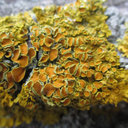Phytochemical Content and Pharma-Nutrition Study on Eleutherococcus senticosus Fruits Intractum.
Nyckelord
Abstrakt
In the past two decades public interest in herbal products has increased significantly in Europe, especially in the plant-based products from non-European traditions. Eleutherococcus senticosus has been used for the treatment of inflammatory diseases, anemia, and rheumatoid arthritis. The Eleutherococcus senticosus fruits intractum was examined for the content of phenolic acids (LC-ESI-MS/MS), minerals (AAS), TPC, and TFC (spectrophotometric assay). The antioxidant activity was determined using free radical scavenging assay and TLC-DB-DPPH∗ dot-blot test. An anti-Hyal activity was evaluated by the spectrophotometric assay method. Cytotoxicity towards HL-60, HL-60/MX1, HL-60/MX2, CEM/C1, and CCRF/CEM leukemic cell lines was done using trypan blue test. Among eight phenolic acids, trans-caffeic acid was found in the largest amount (41.2 mg/g DE). The intractum presented a high amount of macroelements (Ca, Mg, K; 1750, 1300, and 21000 mg/kg) and microelements (Fe, Mn; 32.7, 54.3 mg/kg), respectively. The content of TPC and TFC was 130 and 92 mg/g DE, respectively. The intractum showed anti-Hyal activity (2.16-60%) and an antioxidant capacity (EC50; 52 μg/mL). The intractum most strongly inhibited the growth of HL-60, HL-60/MX1, and CCRF/CEM. A better understanding of the intractum health benefits is important in order to increase its utility and enrich dietary sources of health promoting compounds.



